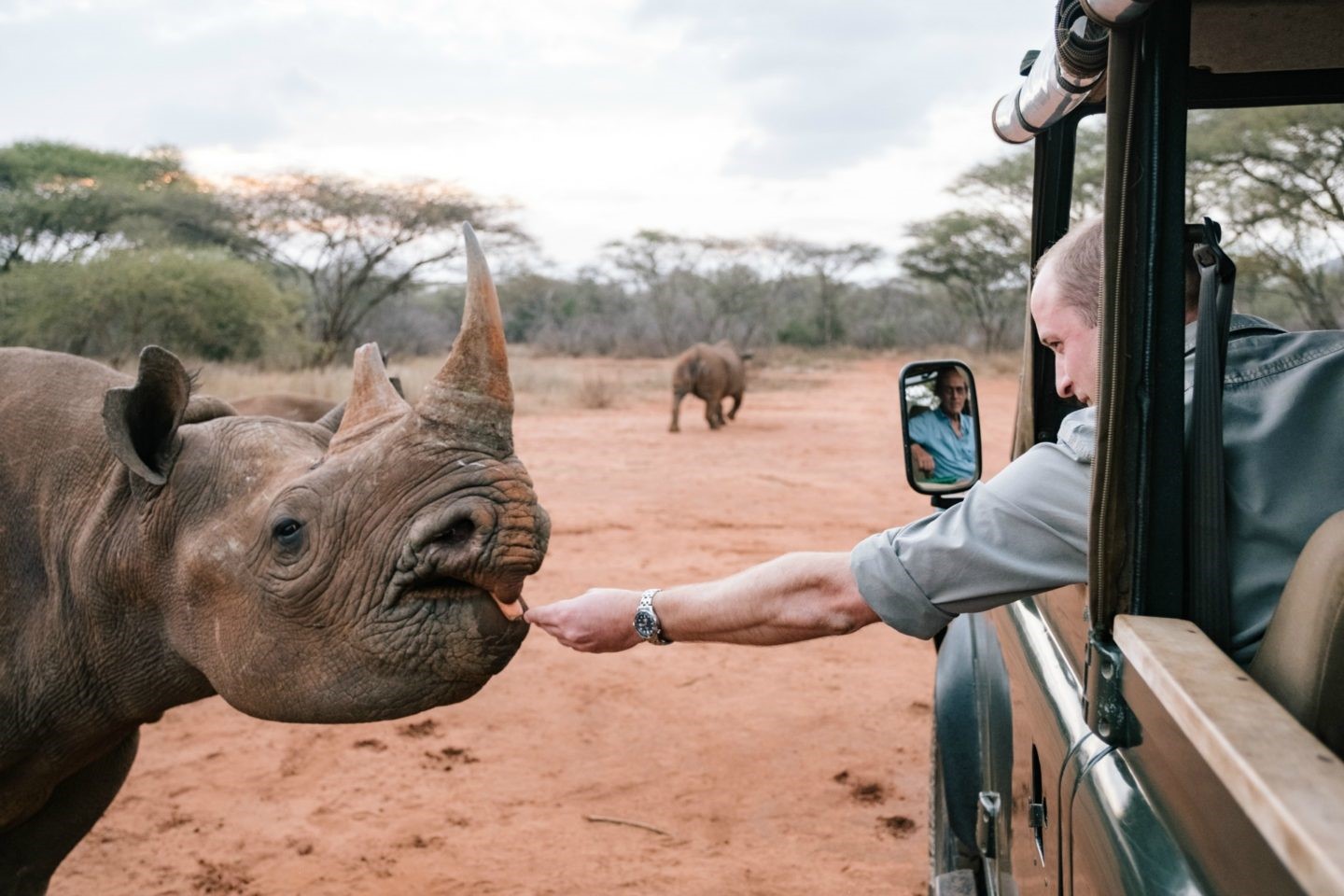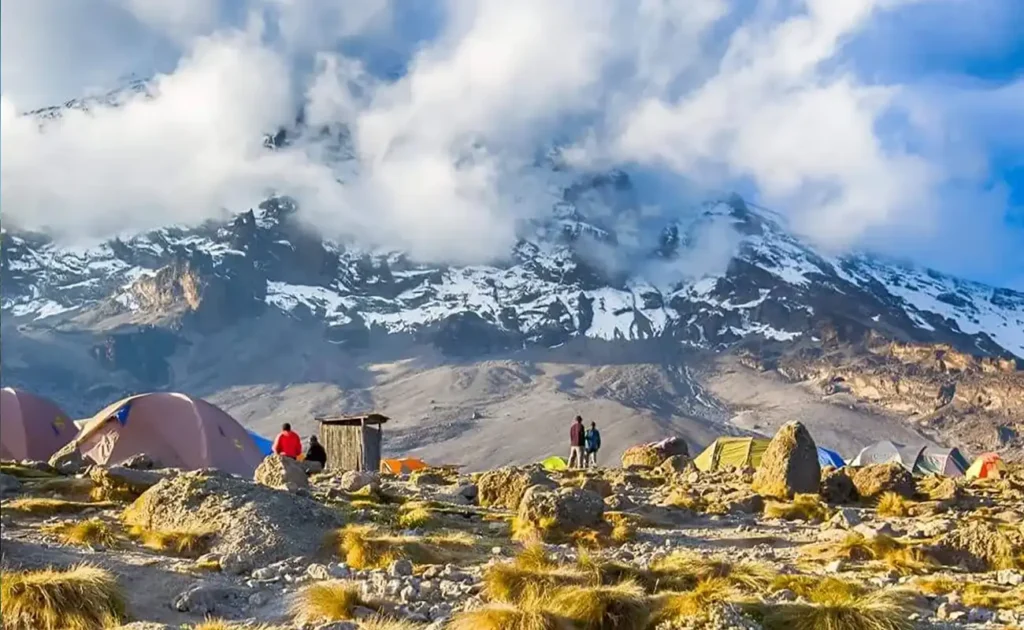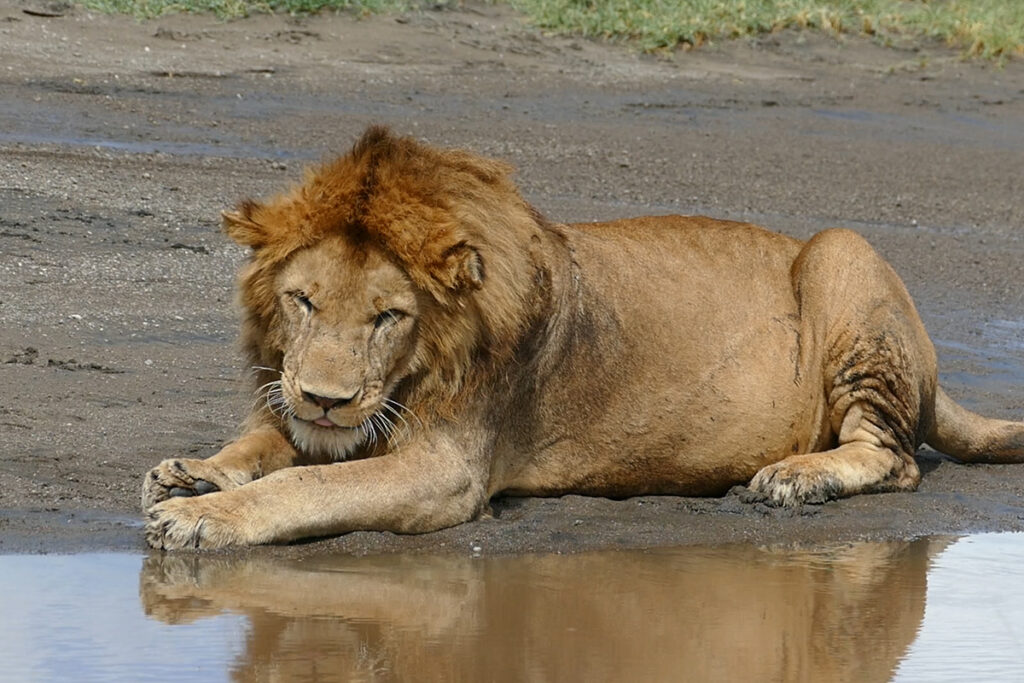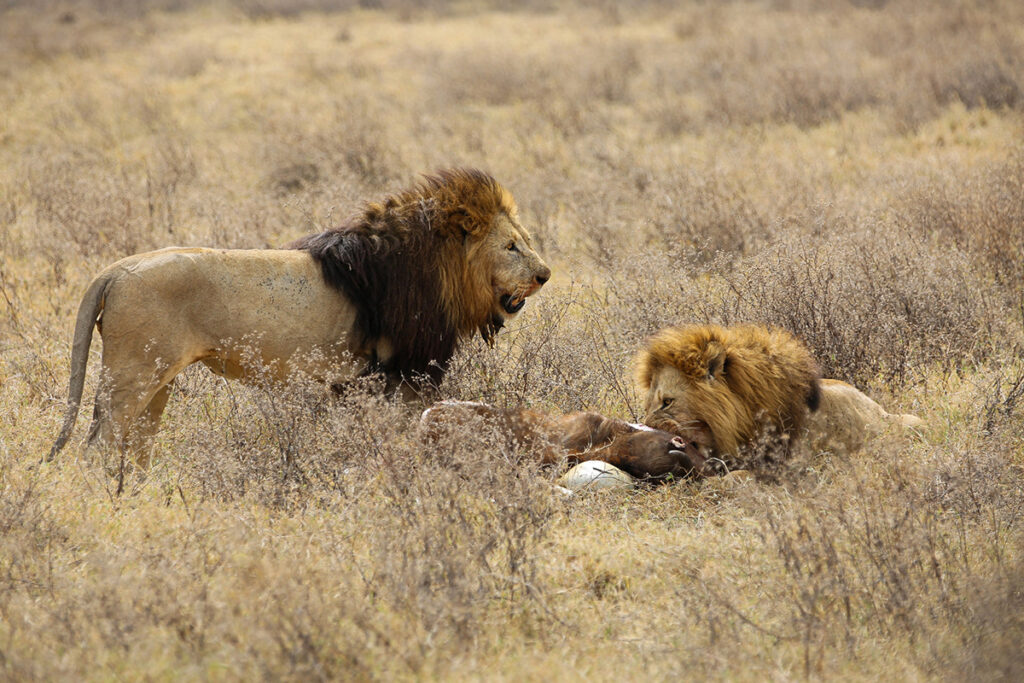At Mkomazi National Park, the dance of endangered black rhinos and African wild dogs is a sight few have had the privilege to witness. Hidden within the shadows of Mount Kilimanjaro, this lesser-known gem offers an uncharted safari experience, far removed from Africa’s well-trodden paths. It’s a sanctuary for those seeking the splendor of nature without the clamor of the crowd.
Mkomazi’s significance within Tanzania’s conservation landscape is unparalleled, being a pivotal component in the protection of endangered species. Established as a game reserve in 1951, it was later transformed into a national park in 2008, illustrating a dedication to sustainable tourism and wildlife preservation. Today, with its 3,245-square-kilometer expanse, Mkomazi stands as a testament to human ambition married with environmental stewardship.

Mkomazi National Park Safari: A Hidden Gem
Many people may not know about Mkomazi National Park, but it’s a place full of surprises. Located in Tanzania, this park protects amazing animals like the black rhino and African wild dogs. Visitors can see these rare creatures during a safari. Unlike other crowded parks, Mkomazi offers a peaceful and unique experience. Here, nature and wildlife can truly shine without disruption.
One of the park’s special features is its beautiful landscape. It combines mountains, savannas, and grasslands, making every corner an adventure to explore. Within its boundaries, you can find a variety of animals and plants. This diverse environment supports a rich ecosystem, contributing to the park’s uniqueness. It’s a place where nature enthusiasts can delight in its untamed beauty.
The park is also known for its conservation efforts. Mkomazi plays a crucial role in protecting endangered species. They have several programs dedicated to saving these animals from extinction. This is why many conservationists support Mkomazi’s mission. According to here is the post, visiting such parks also helps fund these essential activities, ensuring this vital work continues.
If you’re planning to visit, there are many things to consider. When to go, what to bring, and how to get there are crucial parts of planning. The dry season is often the best time to spot wildlife. Additionally, understanding local customs can help make your visit smoother. Many travelers share their experiences, offering tips to make the most out of a visit to this hidden gem.
Wildlife Spotting during Safari
Embarking on a safari in Mkomazi National Park offers thrilling wildlife spotting opportunities. The park is a haven for a variety of animals, including the rare African wild dogs and elusive black rhinos. Visitors can also see majestic elephants wandering across the savanna. These encounters create unforgettable memories for every safari-goer. The diversity of wildlife makes each outing unique.
Safari guides use their expertise to help visitors spot different animals. They share interesting facts about animal behavior and habitats, enriching the experience. Often, safari jeeps are equipped with binoculars for visitors to get a closer look. Guides follow tracks and signs left by animals to lead you to the best viewing areas. With their help, every safari is a learning adventure.
Timing and patience are key for a successful wildlife spotting experience. The early morning and late afternoon are ideal times as animals are more active then. It’s advisable to remain quiet and attentive to your surroundings. The thrill of spotting a lion or watching giraffes graze makes the wait worthwhile. Each sighting is a testament to the park’s vibrant ecosystem.
Some animals are spotted more frequently than others. Common sightings include zebras, antelopes, and numerous bird species. A tally of species spotted can be a fun activity for young explorers, creating excitement for the next safari. This interaction with nature provides valuable lessons on wildlife conservation. Plus, it fosters a lifelong appreciation for the environment.
The Unique Landscape of Mkomazi National Park
Mkomazi National Park boasts an extraordinary landscape that captivates every visitor. The park seamlessly blends mountains, savannas, and grasslands, creating breathtaking scenery. Mount Kilimanjaro serves as a stunning backdrop, adding to the park’s allure. As you explore, the terrain shifts dramatically, offering diverse vistas. This diversity makes the park a true spectacle of nature.
The varied terrain supports a wide range of plant and animal life. Different species of trees, shrubs, and grasses thrive here, each adapted to the unique environment. Some areas are dotted with acacia trees, providing shade and habitat for wildlife. The park’s waterholes also attract an array of animals, creating perfect spots for photography. These features highlight the park’s rich biodiversity.
Visitors are often amazed by the array of colors throughout Mkomazi. During certain seasons, blooming wildflowers paint the landscape in vibrant hues. Peering over a grassy plain, you might spot a herd of elephants with the colorful backdrop. This visual feast is a delight for photographers and nature lovers. The park’s palette changes with the seasons, offering new views for every visit.
Trails within the park offer exciting exploration options. Experienced guides lead hikes to showcase unique spots within the landscape. Observing the terrain up close reveals details often missed from a distance. Some popular activities include guided walks and jeep safaris. These adventures let you appreciate the park’s beauty and complexity in The Ultimate Experience.
Conservation Efforts at Mkomazi National Park
Mkomazi National Park plays a vital role in wildlife conservation. The park focuses on protecting endangered species such as black rhinos and African wild dogs. Through collaborative efforts, they run dedicated programs to increase these animals’ numbers. Conservationists work tirelessly, conducting research and monitoring wildlife health. These actions help to ensure a stable future for these species.
One of the park’s key initiatives is the Rhino Sanctuary. This secure area offers protection from poachers and other threats. Within the sanctuary, rhinos can thrive and reproduce safely. Rangers patrol the area, using technology to monitor animal movements. Such strong measures have made a significant impact on the rhino population.
The park also promotes community involvement in conservation. By engaging local communities, they foster a sense of ownership over natural resources. This participatory approach leads to better protection efforts. Locals are educated about the importance of preserving wildlife and their habitats. Additionally, the park provides job opportunities, supporting the local economy while promoting sustainability.
Besides animal conservation, Mkomazi emphasizes environmental preservation. Measures are taken to protect the park’s unique landscapes from human impact. Efforts include reforestation projects and waste management strategies. Maintaining the diverse habitat is crucial for both flora and fauna. These projects highlight the park’s commitment to lasting environmental health.
Education and awareness programs are another facet of the park’s conservation strategy. Visitors and locals alike participate in workshops and tours. These programs focus on teaching the importance of conservation and sustainable practices. Educating youth is particularly emphasized, as they are the future stewards of these lands. Through such efforts, the park fosters a culture of conservation for generations to come.
Planning Your Safari: Practical Information
When planning your safari to Mkomazi National Park, timing plays a crucial role. The dry season from June to October is ideal for wildlife viewing. During this period, animals gather around water sources, making them easier to spot. The park is less lush, but the visibility is excellent. Prepare to be amazed by the concentrated wildlife action during these months.
Proper packing is essential for a comfortable safari experience. Lightweight, neutral-colored clothing is recommended to blend in with the surroundings. Don’t forget essentials like hats, sunglasses, and sunscreen to protect against the sun. Binoculars and cameras are a must-have for capturing memorable moments. A good pair of walking shoes will also come in handy for any guided nature walks.
Booking accommodations within or near the park is another important step. Options range from luxurious lodges to more budget-friendly campsites. Many facilities offer package deals that include guided safaris. Early booking is advised, especially during peak seasons. Accommodations often provide meals, which is one less thing for you to worry about.
Understanding the park’s rules and regulations enhances your visit. For example, staying inside the vehicle during most of the safari ensures safety and minimizes disturbance to wildlife. Respecting animal space and maintaining silence can lead to more rewarding sightings. Guides will inform you of all the necessary do’s and don’ts. Following these guidelines helps preserve the natural environment for future visitors.
Various activities are available besides traditional jeep safaris. Visitors can engage in bird watching, hiking, or visiting the rhino sanctuary. Educational tours are often available, offering deeper insights into conservation efforts. Interacting with local communities can also be a rich cultural experience. These activities provide a well-rounded visit, making it more than just a wildlife adventure.
Experiencing Local Culture around Mkomazi National Park
Exploring the local culture near Mkomazi National Park enriches the safari experience. The area is home to vibrant communities with deep-rooted traditions. Opportunities to learn about their way of life bring added depth to your visit. Cultural tours often include visits to local villages. These tours are a chance to see how traditional lifestyles merge with modern influences.
Local markets are bustling hubs of activity and color. They offer a variety of goods, from handmade crafts to fresh produce. Visitors can purchase unique souvenirs, supporting local artisans in the process. Tasting local foods is another adventure in itself. Spicy dishes and exotic fruits offer flavors that spark curiosity and delight the senses.
Traditional dance performances are a highlight of cultural visits. Many communities showcase their heritage through music and dance, inviting others to participate. These performances offer a glimpse into the community’s history and values. Often, storytelling accompanies music, providing context to the dance’s meaning. Engaging with these activities fosters a stronger connection to the local culture.
While engaging in cultural experiences, respecting local customs is essential. Simple gestures, such as dressing modestly and learning a few words in the local language, are appreciated. Listening and showing genuine interest in their stories builds mutual respect. Guides can offer advice on cultural etiquette for an even smoother interaction. By being respectful, you help maintain the community’s welcoming atmosphere.
Participating in community-driven projects can also leave a positive impact. Some initiatives focus on education, health, or conservation efforts. Joining these activities provides insight into the community’s challenges and triumphs. It also allows visitors to contribute to ongoing projects effectively. These contributions can make a lasting difference, benefiting both the community and the travelers involved.

Frequently Asked Questions
Embarking on a Mkomazi National Park safari opens doors to unique wildlife encounters and conservation insights. Below are some common questions and answers to guide you on this adventure.
1. What wildlife can you see in Mkomazi National Park?
Mkomazi National Park is home to a rich variety of wildlife, making it a paradise for nature enthusiasts. Among the many species, visitors can spot the rare black rhinos and African wild dogs. These animals are part of the park’s renowned conservation projects, protecting endangered species and supporting their populations. Additionally, visitors can see majestic elephants, giraffes, zebras, and countless bird species that thrive within the park’s diverse habitats.
The park’s landscape plays a crucial role in supporting its wildlife diversity. Its vast savannas, hills, and water sources create ideal conditions for different animal species. The unique ecosystem allows for exciting game drives where lucky visitors might witness the extraordinary behaviors of Africa’s wildlife up close. With guided tours, you can explore these creatures’ natural environments and learn about their survival tactics.
2. Why is conservation important in Mkomazi National Park?
Conservation is vital in Mkomazi National Park due to the endangered species it harbors. The park’s dedicated conservation efforts focus on preserving black rhinos and African wild dogs, both at risk of extinction. These animals face numerous threats, including poaching and habitat loss, which the park actively combats through various programs and strategies. By protecting these species, the park maintains ecological balance and preserves biodiversity for future generations.
Efforts in conservation also foster partnerships with local communities, promoting sustainable practices that benefit both people and wildlife. These collaborations nurture a sense of stewardship among residents, encouraging them to protect the park’s natural resources. Moreover, conservation attracts researchers and tourists interested in ecology, which in turn supports the area’s economy and funds further preservation actions. This holistic approach underscores why conservation remains a priority for Mkomazi National Park.
3. What is the best time to visit Mkomazi National Park?
The best time to visit Mkomazi National Park is during the dry season, typically from June to October. This period offers ideal conditions for wildlife viewing as animals gather around waterholes, making them easier to spot. Additionally, lower grasses and less foliage improve visibility and create fantastic opportunities for photography. The pleasant weather during these months also enhances the overall experience, allowing for comfortable exploration and extended game drives.
Visiting during the dry season not only guarantees exceptional sighting chances but also aligns with peak tourist season. This means organized activities and tours are more readily available, allowing visitors to maximize their itinerary. Furthermore, the dry season coinciding with the arrival of migratory birds adds another layer of excitement for birdwatching enthusiasts. Regardless of the season, each visit to the park promises captivating wildlife encounters and dazzling landscapes.
4. How does Mkomazi support the local community?
Mkomazi National Park supports the local community through job creation and educational opportunities. The park’s existence boosts employment in areas such as tourism, guiding, and conservation work. This allows locals to earn a living while contributing to the park’s success and long-term sustainability. Educational programs run by the park also increase awareness about conservation, equipping community members with knowledge and skills to make informed decisions about their environment.
In collaboration with local leaders, the park implements initiatives that address specific community needs. These projects focus on improving infrastructure, providing access to resources, and promoting health and welfare. Furthermore, the park encourages eco-tourism, which stimulates local businesses like craft markets and eateries. Through these efforts, Mkomazi fosters a thriving ecosystem where both the human and natural worlds benefit and coexist harmoniously.
5. What activities can visitors enjoy in Mkomazi National Park?
Visitors to Mkomazi National Park can engage in a variety of exciting activities that enhance their safari experience. Game drives are the most popular way to explore the park’s diverse wildlife and stunning landscapes. With knowledgeable guides, tourists can learn about animal behavior and the park’s conservation efforts. Birdwatching, too, is a favorite pastime due to the multitude of exotic bird species populating the area.
Aside from wildlife observation, the park offers opportunities for cultural experiences with local communities. Visitors can partake in guided walks, which include trips to nearby villages, allowing them to learn about local customs and traditions. Educational programs and rhino sanctuary visits further enrich the adventure, offering insights into ongoing conservation projects. These varied activities ensure a well-rounded visit that caters to all interests.



